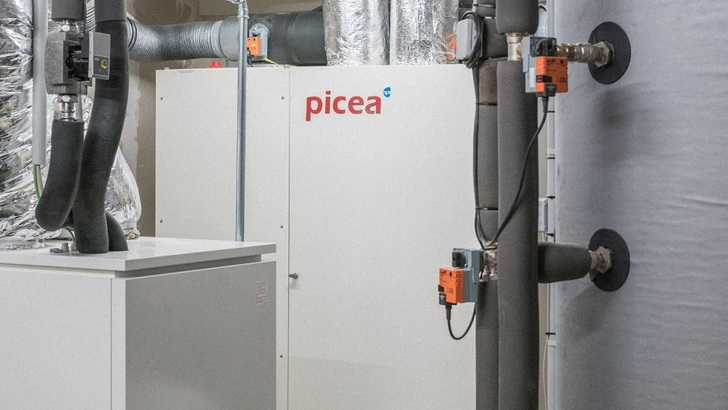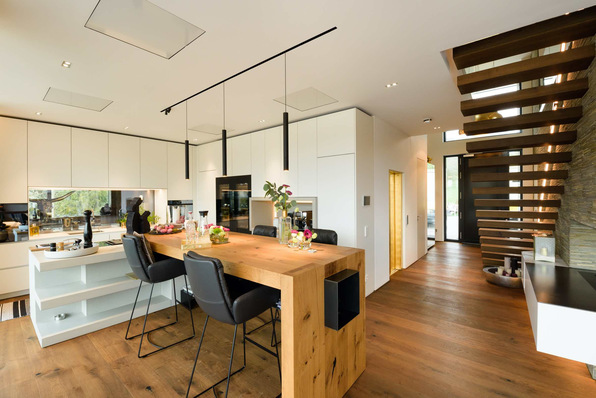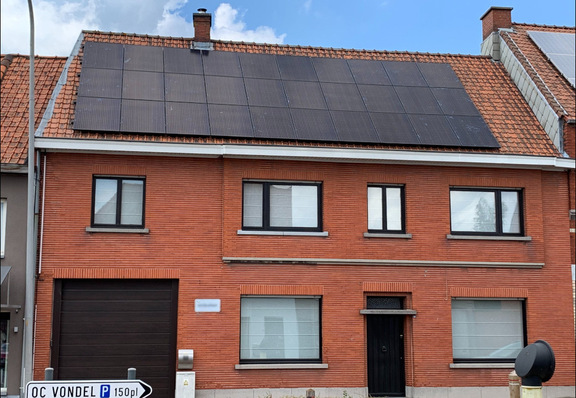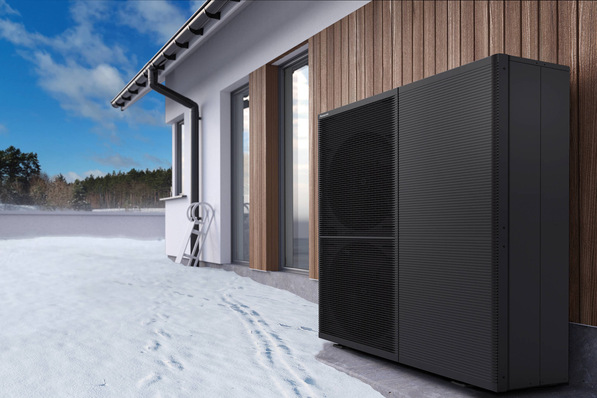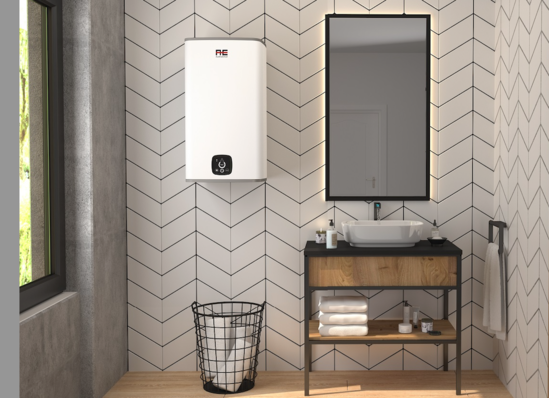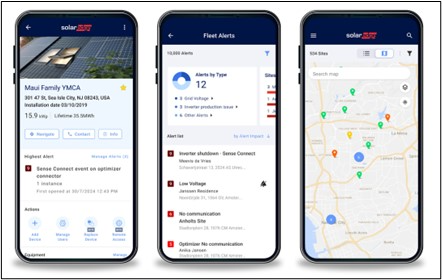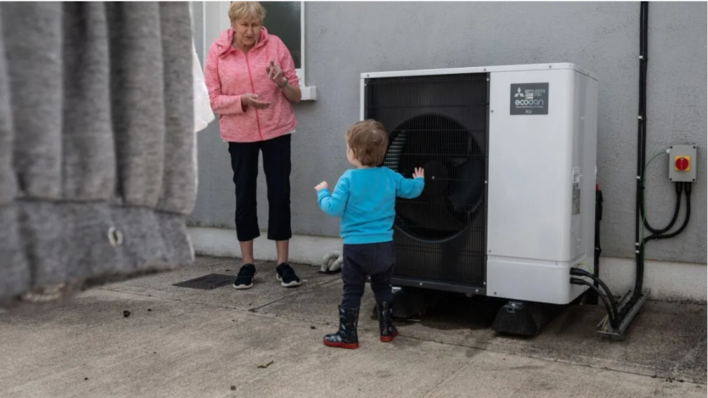Picea can generate both electricity and air heating. But unlike others (Viessmann, SolidPower) HPS do not take the extra step of using natural gas. The PEM fuel cell system runs on hydrogen. The gas is produced in the summer by electrolysis when excess solar power is available. A certified hydrogen tank stores the gas for the months when there is only little sunshine.
This year HPS plans to stimulate sales through installing companies and go into series production. The first deliverance of ordered units will be in the third quarter this year.
Picea generates eight kilowatts of single-phase electricity which it feeds into the domestic grid. Up to 20 kilowatts can be made available for a short period. This system does not have to be connected to the grid, it can self-sufficiently power a home. The required battery storage is already integrated.
Gas tank for hydrogen
The size of the hydrogen tank depends on the photovoltaic system and the amount of electricity required in winter. “The tanks are designed for 300 bars and certified according to safety standards,” Zeyad Abul-Ella, Managing Director of HPS says. “There will be no issues about insurance.” The hydrogen tanks do not require special gas warming systems or forced ventilation, so they are to all intents and purposes hermetically sealed.
So far, the system has been designed for an annual power demand of 3,000 to 6,000 kilowatt hours. The hydrogen storage tank requires between four and seven square metres and, if appropriate, can be tucked away in the carport, a small annexe or underground. It is installed just as a conventional liquefied gas tank would be and reaches about head height. The compact unit inside the building requires a floor space of three square metres.
Storing solar energy in the form of gas
In summer, the PEM fuel cell only comes on if there is not enough solar power. It only starts up in the autumn and spring to cover domestic electricity demand. Then it can generate up to 1.5 kilowatts. In winter, it is expected to run more or less around the clock.
From this point of view, Picea is an electricity-generating system, the waste heat is only used via the home's ventilation system. The unit is entirely self-controlling without external intervention. And it operates almost completely silent. The entire power electronics, including an off-grid inverter, is integrated.
The system has its own on-board battery for short-term and night-time power requirements. The first prototypes used lead gel batteries with a capacity of around 25 kilowatt hours. "We have calculated this as being ideal in terms of economic efficiency," Zeyad Abul-Ella says. "We operate the batteries carefully in order to achieve the longest possible service life. It is possible that we might switch to lithium-ion batteries in the future. This will mostly depend on prices.“
High prices at the beginning
Well, prices – it always depends on it! HPS starts the distribution of the Picea system with 54,000 euros – excluding installation in the house. Of course, the hope is that the prices will drop fast with the number of systems produced and installed.
Viessmann offer the Vitovalor 300-P for less than 20,000 euros and SolidPower its BlueGen for around 25,000 euros. Viessmann has already installed around 1,000 units, even so SolidPower. However, these systems are still grid-connected. Future conversion to an off-grid mode is only a matter of time. Of course, this would require a sufficiently large storage battery.
But a high-performance fuel cell with sufficient operational capacity also allows savings in electricity storage. It can either run continuously (basic load coverage) or be powered up when required to supply power. However, every system launch increases the wear and tear on the reformers and stacks, so stop-and-go operation is not common.
Interesting service concept
The service concept that HPS is starting out with is interesting. The system housing is the same for all variants. All modules are designed as easily replaceable rack modules. The system is prewired at the factory. “Our service contract covers the risk of having to replace the stack of the fuel cell over time,” Henrik Colell, the second Managing Director of HPS, explains. “Replacing the hydrogen components is simple and can be done by any trained installing company.” (HS)
Stay informed, get our newsletter twice a week.
Register here: http://www.pveurope.eu/Newsletter
Read more on PV in Europe:
http://www.pveurope.eu/News/Power-Heat/Fuel-cells-Self-generated-electricity-even-in-winter
http://www.pveurope.eu/News/Power-Heat/Microsoft-Fuel-cells-instead-of-emergency-diesel-generators
www.pveurope.eu/News/Power-Heat/Fuel-cells-SolidPower-collects-40-million-euro-to-build-a-factory
http://www.pveurope.eu/News/Solar-Generator/Fuel-cells-Complete-freedom-for-the-customer
http://www.pveurope.eu/Products/Storage/Batteries/HPS-Picea-seasonal-energy-storage-with-a-fuel-cell
http://www.pveurope.eu/News/Energy-Storage/Fuel-Cells-Solar-energy-all-year-long
Read more about solar energy storage.
Read more about self-consumption.


